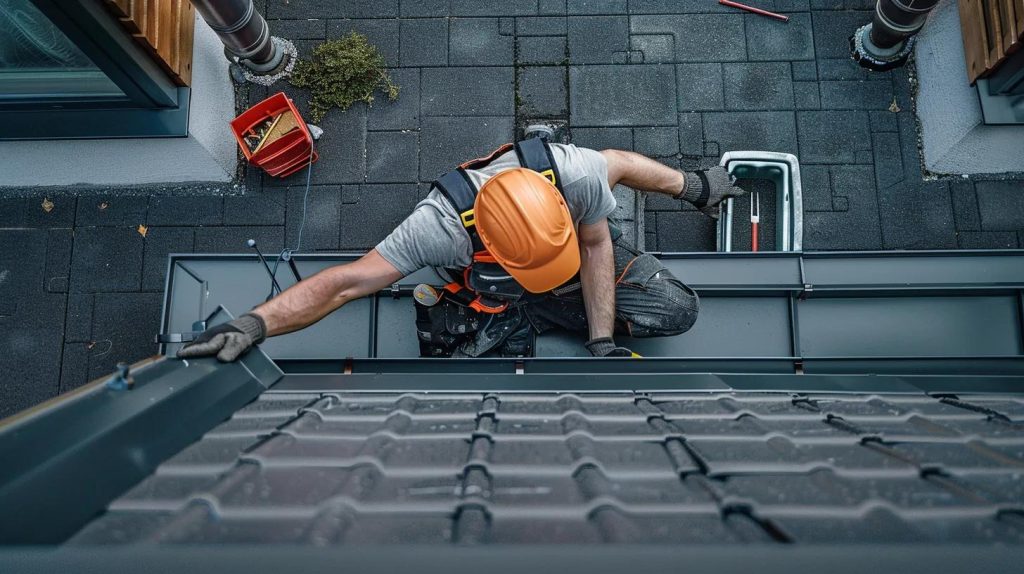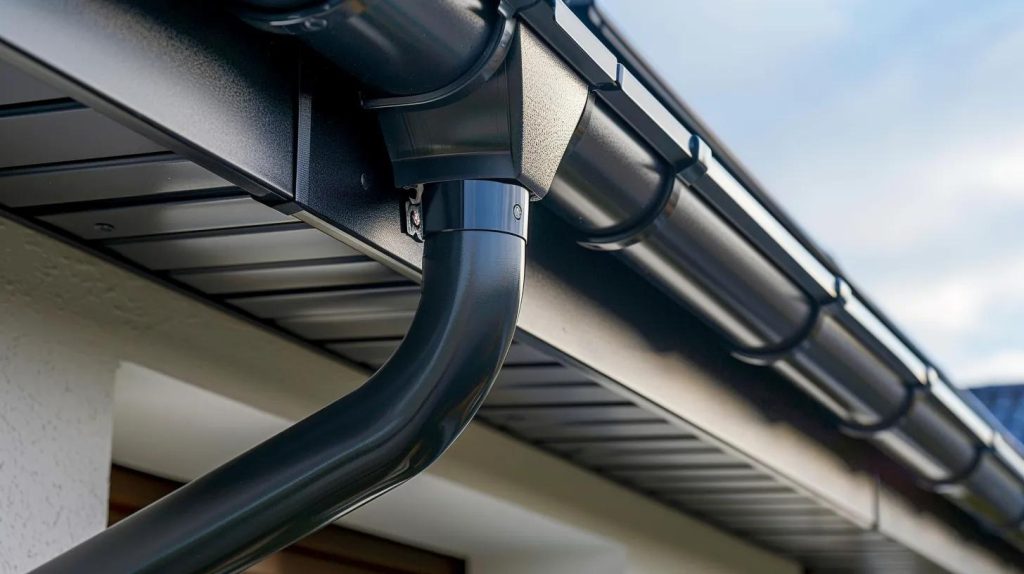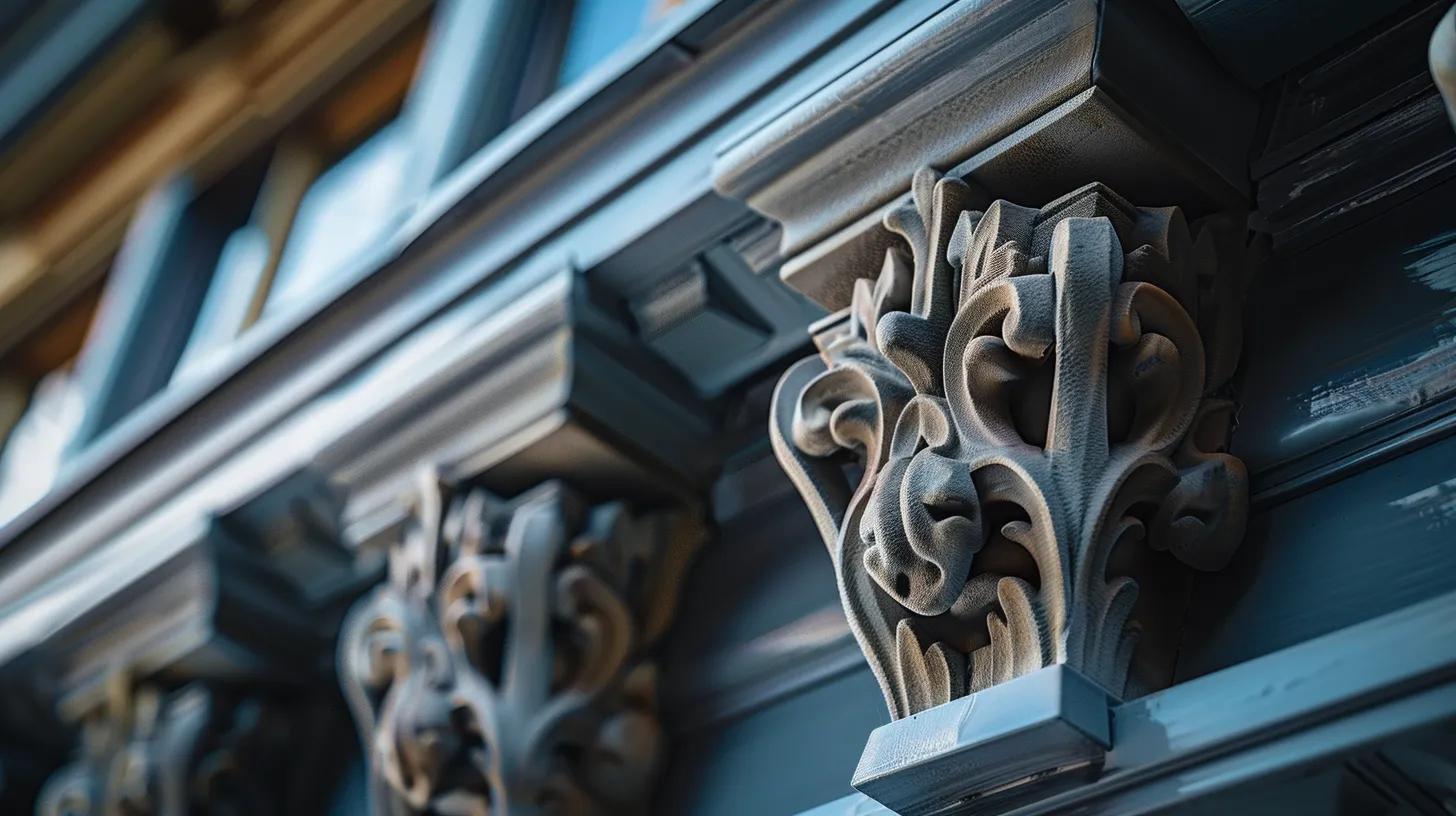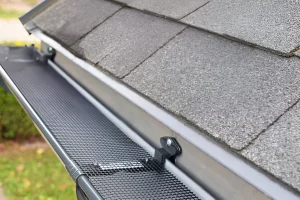Maintaining eavestroughs is essential for protecting a home from water damage, basement flooding, and roof deterioration. Homeowners often face issues like clogged gutters, unnoticed leaks, and improper installations that can lead to long-term structural damage. This article outlines common maintenance mistakes and offers actionable guidance to fix and prevent these problems while using proper materials and techniques to save money and enhance home safety.
Key Takeaways
- Clogged gutters and unaddressed leaks may cause severe water damage and roof deterioration.
- Regular inspections and proper cleaning techniques are key to maintaining eavestrough integrity.
- Professional installation and quality gutter materials help reduce long-term issues.
- Gutter guards effectively prevent debris buildup and lower repair costs.
What Are the Most Common Eavestrough Maintenance Mistakes?

Why Ignoring Clogged Gutters Causes Serious Damage
When gutters are clogged, water overflows and can cause roof leaks, fascia damage, and foundation erosion. Debris buildup increases risks of wood rot, corrosion, and mold growth on siding and around the eavestrough. In humid climates, this neglect exacerbates moisture issues and shortens the gutter system’s lifespan.
How Neglecting Regular Gutter Inspections Leads to Costly Repairs
Failing to inspect gutters regularly allows minor issues—such as loose hangers, small leaks, or misalignments—to develop into major structural problems. Without routine checks, gaps and off-level installations are missed until significant water damage occurs, leading to expensive repairs.
What Happens When Leaks and Damage Are Left Unrepaired?
Unrepaired leaks enable water to penetrate walls and roofs, compromising insulation and promoting mold growth. Visible cracks and rust weaken the gutter system and may eventually damage the home’s structure. Timely repairs help contain deterioration and prevent costly remediation later.
Why Improper Gutter Installation Creates Long-Term Issues
Improper installation, including incorrect slope or poor attachment to the fascia, results in water pooling and inefficient drainage. Without proper alignment, gutters don’t channel water effectively, causing overflow and premature wear. Professional installation ensures correct pitch, secure mounting, and a well-integrated system.
How Choosing the Wrong Gutter Materials Affects Durability
Low-quality or incompatible materials can deteriorate rapidly in severe weather. Some metals may corrode quickly, and vinyl gutters can warp in extreme heat. The choice between aluminum, copper, vinyl, or steel should consider local climate conditions. Quality materials lead to fewer repairs and a longer service life.
How Can You Prevent and Fix Clogged Gutters Effectively?
What Causes Gutters to Become Clogged?
Gutters become clogged mainly from accumulated leaves, pine needles, and other debris carried by wind and rain. Overhanging trees, seasonal shedding, and vegetation also contribute. Bird nests and mold buildup can further restrict water flow. Recognizing these causes is important for effective prevention.
How Often Should You Clean Your Gutters?
Gutters should ideally be cleaned at least twice a year—in the fall and spring—to remove seasonal debris. Homes near trees or in windy areas might require more frequent cleaning. Regular cleaning ensures smooth water flow and prevents clogs that lead to water overflow and damage.
What Tools and Safety Tips Are Needed for Gutter Cleaning?
For gutter cleaning, use a sturdy ladder, gloves, a trowel, and a garden hose with a high-pressure nozzle. Ensure stable footing and have someone assist if possible. Wear non-slip shoes and eye protection to guard against injury from falling debris or slips.
When Should You Call a Professional for Gutter Cleaning?
If gutters are hard to reach, show severe buildup or damage, or if previous cleaning efforts have failed, it’s best to call a professional. Experts have specialized tools and experience to perform a thorough cleaning and check for hidden issues.
How to Conduct Effective Gutter Inspections to Avoid Maintenance Mistakes?

What Signs Indicate Your Gutters Need Immediate Attention?
Look for sagging sections, visible rust, consistent overflow, and pooling water along the foundation. Stains on exterior walls or rotting fascia also indicate poor performance. Early attention can prevent further water damage and costly repairs.
How Often Should Homeowners Inspect Their Eavestroughs?
Homeowners should inspect eavestroughs at least four times a year—once each season—and more frequently after heavy storms or in severe weather regions. Regular inspections help address minor issues before they worsen.
What Are the Key Areas to Check During a Gutter Inspection?
Key areas include the connection between the gutter and fascia, downspouts for blockages, and previous repair sites. Check for proper alignment, secure attachments, and any signs of leakage, especially at joints, seams, and corners.
How Can Regular Inspections Prevent Costly Repairs?
Routine inspections help detect early wear, leaks, and blockages, allowing homeowners to address problems promptly. This proactive approach reduces the risk of structural damage to roofs and walls and lowers long-term repair costs.
What Are the Best Practices for Repairing Leaks and Damage in Eavestroughs?
How to Identify Common Types of Gutter Leaks and Damage
Common problems include pinhole leaks, cracked seams, and rust spots. Visual inspections and water tests during rain can help spot where sealant has failed or where materials have degraded. Noting the type and location of damage guides targeted repairs.
What Are Step-by-Step Methods to Repair Leaky Gutters?
Begin by thoroughly cleaning the gutters, then use a silicone-based sealant to fix minor leaks. For larger cracks, replace the damaged section. After repairs, test the gutter with water to ensure the fix is effective. Regular monitoring is key to preventing recurrence.
When Is It Time to Replace Rather Than Repair Your Gutters?
If damage surpasses repair capabilities or if gutters are heavily corroded or warped, replacement may be more cost-effective. Repeated repairs can become a financial burden, making it wise to invest in higher quality new gutters.
How Do Weather Conditions Affect Gutter Damage and Repairs?
Extreme weather such as heavy rain, snow, and high winds can accelerate wear and worsen existing issues. Temperature fluctuations cause expansion and contraction, leading to material fatigue. Consider local weather patterns when planning repairs or selecting new materials.
Why Is Proper Gutter Installation Crucial to Avoid Maintenance Problems?

What Are the Most Common Installation Mistakes to Avoid?
Common errors include an incorrect slope, poorly secured hangers, and inadequate expansion gaps. These mistakes lead to water pooling and excessive wear from movement and vibration. Proper installation is essential for effective drainage and durability.
How Does Professional Installation Improve Gutter Longevity?
Professionals ensure the proper pitch, secure fittings, and accurate measurements. This minimizes leaks and blockages and results in a system that withstands severe weather and regular use. Many professional installations also come with warranties, adding extra value.
What Installation Features Help Prevent Future Maintenance Issues?
Key features include secure fastenings, integrated downspouts, and corrosion-resistant materials. Seamless gutter designs reduce joints, which are potential leak points. Such features enhance drainage efficiency and lower long-term maintenance needs.
How to Choose the Right Installer for Your Eavestroughs?
Choose an installer with proven experience and positive reviews. Request certificates, ask for references, and compare warranties offered by different professionals. An installer skilled in both gutter installation and repair will provide the best performance.
How to Choose the Right Gutter Materials to Minimize Maintenance Mistakes?
What Are the Pros and Cons of Aluminum, Copper, Vinyl, and Steel Gutters?
- Aluminum gutters are lightweight, cost-effective, and rust-resistant but may dent.
- Copper gutters are durable and attractive but come at a higher cost.
- Vinyl gutters are low-maintenance and affordable but can warp in high temperatures.
- Steel gutters are strong but may rust if not properly coated.
How Do Different Materials Perform in Various Climates?
Aluminum and copper work well in coastal or humid climates due to their corrosion resistance. Vinyl is suitable for milder climates, while steel needs protective coatings in wet or salty environments. Each material’s performance varies with regional conditions.
What Maintenance Requirements Vary by Gutter Material?
Steel gutters often need repainting or rust-proofing, while vinyl requires only occasional cleaning. Copper will naturally develop a patina over time. Consider these factors when choosing the type that fits your maintenance routine and local climate.
How Does Material Choice Affect Repair and Replacement Costs?
High-quality materials, although more expensive initially, tend to lower long-term repair costs because they better resist damage. Cheaper options may incur frequent repairs or early replacement, affecting overall cost efficiency.
What Are the Benefits of Using Gutter Guards to Prevent Maintenance Issues?

How Do Gutter Guards Reduce Clogging and Damage?
Gutter guards act as a barrier to leaves, debris, and nesting materials, ensuring smooth water flow. This preventative step significantly lowers the frequency of clogs and minimizes maintenance demands, thereby reducing the risk of overflow and structural damage.
What Types of Gutter Guards Are Available and Which Are Best?
Common options include micro-mesh screens, reverse curve guards, and foam inserts. Micro-mesh guards are particularly effective at filtering even small debris. The best type depends on local vegetation and weather conditions.
How Is Gutter Guard Installation Done Correctly?
Proper installation requires securing the guards to the existing gutter without disrupting the slope. This involves precise measurements, careful placement, and professional fitting to avoid gaps that let debris in. A well-installed guard system reduces cleaning frequency and damage.
When Should Homeowners Consider Adding Gutter Guards?
Gutter guards are recommended for homes in areas with heavy foliage, frequent storms, or recurring clogging issues. They represent a proactive investment that reduces the need for constant cleaning and lowers repair costs.
Table: Comparison of Gutter Materials and Maintenance Needs
Before choosing a gutter material, consider the following:
| Material | Durability | Maintenance Needs | Cost Range |
|---|---|---|---|
| Aluminum | High; dent-prone | Low; periodic cleaning | $$ |
| Copper | Very high; patina | Minimal; occasional polishing | $$$$ |
| Vinyl | Moderate; warping | Minimal; mainly cleaning | $ |
| Steel | High if coated | High; regular rust-proofing | $$ to $$$ |
This table shows that material choice significantly impacts long-term maintenance costs and system performance.
Final Thoughts
Proper eavestrough maintenance is key to protecting your home from water damage and extensive repairs. By understanding mistakes such as ignoring clogs, skipping inspections, and poor installation, homeowners can address issues early. Choosing the right materials, relying on professional installation, and using gutter guards will help maintain a robust and efficient gutter system with minimal upkeep and long-term cost savings.
Frequently Asked Questions
Q: What are the consequences of clogged gutters? A: Clogged gutters lead to water overflow, roof damage, foundation erosion, and can promote mold growth, all of which increase repair costs.
Q: How often should eavestroughs be inspected? A: They should be checked seasonally—at least four times a year—and more frequently after storms or heavy leaf fall.
Q: Are professional gutterinstallations worth the cost? A: Yes, professional installations ensure proper slope, secure attachments, and longevity, significantly reducing future maintenance and repair expenses.
Q: What type of guttermaterial suits severe climates? A: Aluminum or copper gutters are ideal for severe climates due to their corrosion resistance and durability under extreme conditions.




